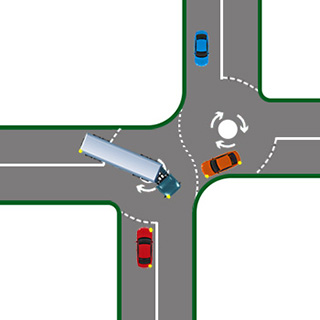Roundabouts - A Tutorial for Car Drivers
Roundabouts allow traffic to merge smoothly together and, in doing so, keep the overall traffic stream flowing smoothly.
Approaching A Roundabout
As you approach a roundabout look well ahead for the advance warning sign (image below).
This will tell you the layout of the roundabout and show you which route direction you need to take and therefore which lane to get into.
You should then:
- Use the MSM/PSL routine
- Get into the correct lane in good time
- Look for and respond to any lane road markings (image bottom right)
You shouldn’t:
- Straddle lanes
- Change lanes at the last moment.
- Once on the roundabout, build up and maintain a reasonable speed. Failing to do this, especially when you are in the right-hand lane, may result in other drivers passing on your nearside, who may then come to block your exit route.
- Always check for vehicles on your left before leaving a roundabout. If the left-hand lane of the exit road is blocked or if there are vehicles in the lane to your nearside, you should leave in the right-hand lane.
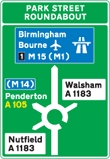
Roundabout Information Sign

Roundabout Ahead

Mini Roundabout Ahead
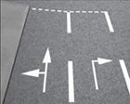
Roundabout Road Markings
Priority At Roundabouts
At most roundabouts, traffic already on the roundabout has priority, so you must give way to traffic approaching from your right.
There are a few roundabouts where traffic on the roundabout has to give way to traffic entering. These will be signed by Give Way signs and road markings.
Increasingly, large roundabouts are being controlled by traffic lights. On such roundabouts, it is the traffic lights that determine priority. So simply get into the correct lane and follow the lights.
Look Out For Vehicles
- Turning right without indicating
- Indicating right but going straight on
- Using the right-hand lane to go straight ahead
- Making a U-turn.
Turning Left
- Approach in the left-hand lane.
- Signal left as you approach.
- If necessary, stop at the Give Way line and give priority to vehicles already on the roundabout.
- Once on the roundabout keep to the left.
- Continue to signal until you have left the roundabout.
Going Straight Ahead
- Approach in the left-hand lane.
- Do not signal.
- If necessary, stop at the Give Way line and give priority to vehicles already on the roundabout.
- Once on the roundabout keep to the left.
- Check your mirrors, especially the left exterior.
- After passing the exit before the one you want signal left.
Turning Right
- Approach in the right-hand lane.
- Signal right as you approach.
- If necessary, stop and give way.
- Once on the roundabout keep to the right.
- Check your mirrors, especially the left exterior.
- Signal left after passing the exit before the one you want.
- Check you left mirror for vehicles on your inside. If safe, steer to the exit. If a vehicle is blocking your exit path, keep your right signal on and continue around the roundabout until you again reach the exit you want.
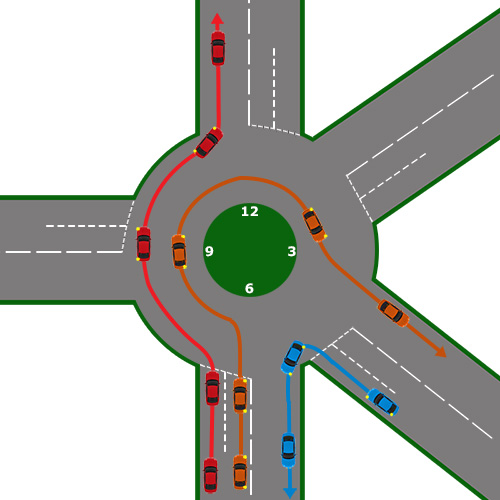
Which Lane To Take
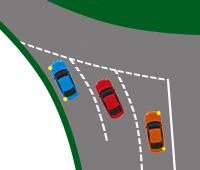
Sometimes the layout of a roundabout may make it difficult to judge which lane to take when approaching the roundabout. As a guide, imagine the roundabout as a clock face, with you approaching from the six o’clock position.
If your exit road is past 12 o’clock and there are no other road markings to guide you, approach in the right-hand lane.
If there are three lanes on the approach to the roundabout, use
- the left to turn left
- the middle lane to go straight ahead
- the right lane to turn right.
Other Types of Road User
Cyclists, horse riders and long vehicles can all take unusual courses at roundabouts. For example, cyclists and horse riders may stay in the left-hand lane even when turning right.
Long vehicles may need to use more than one lane to negotiate the roundabout.
Mini-Roundabouts
- you have less time to signal to leave the roundabout
- larger vehicles may not be able to avoid driving over the roundabout road markings
- you should not enter the roundabout unless certain that other vehicles on it will be able to clear the route you intend to take.
